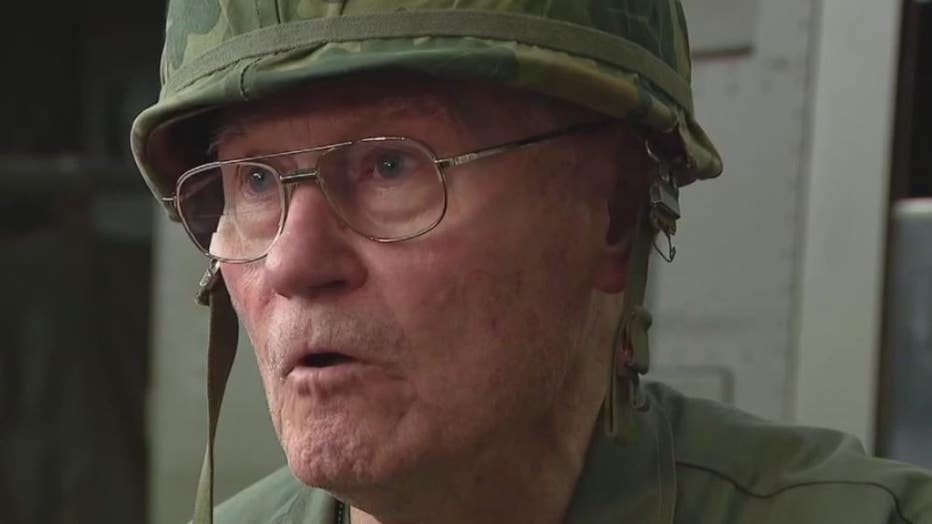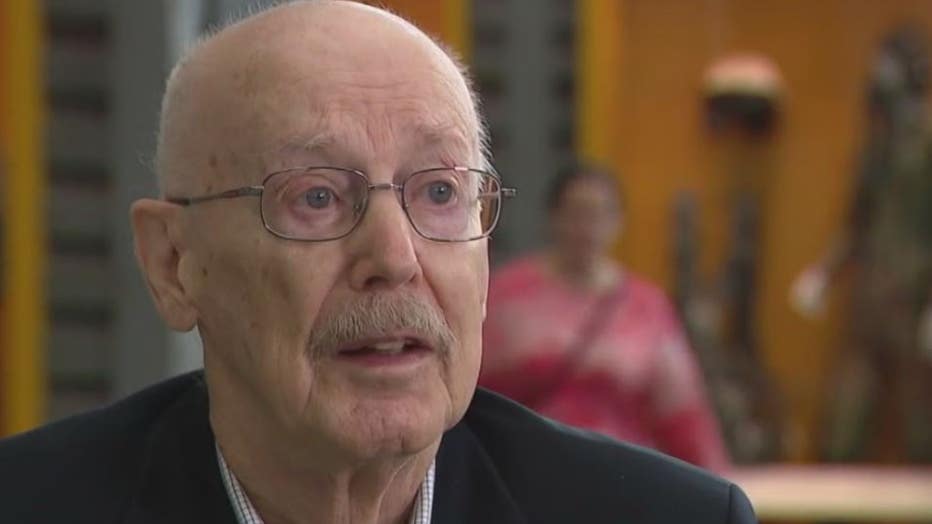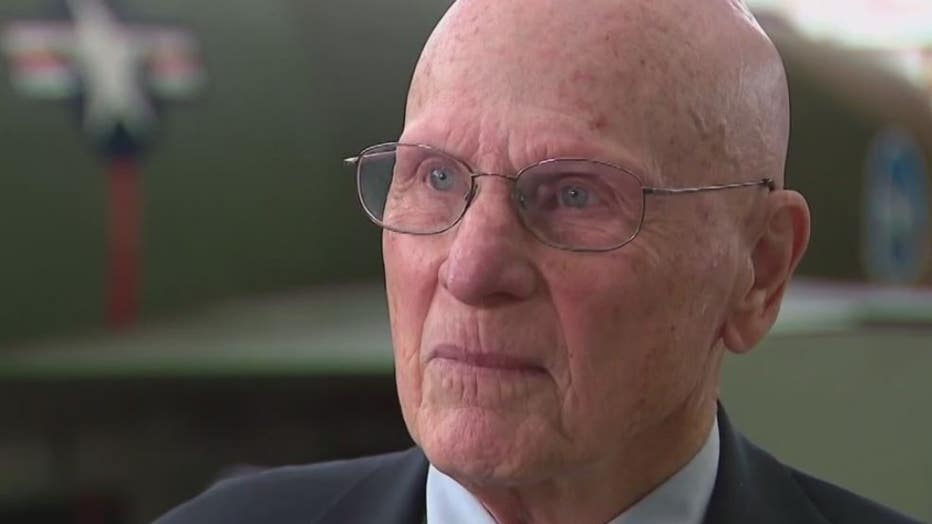Growing number of exhibits in Washington and U.S. help Vietnam War veterans reflect on service
Vietnam War Veterans reflect on service at Museum of Flight
The freedoms exercised in the United States would not be possible without the sacrifice of veterans. In observance of Veterans Day 2023, and every day, FOX 13 News honors the men and women who served in the military.
SEATTLE - The freedoms exercised in the United States would not be possible without the sacrifice of veterans. In observance of Veterans Day 2023, and every day, FOX 13 News honors the men and women who served in the military.
This Veterans Day is special for the soldiers, sailors, marines, and airmen who served during the Vietnam War. 2023 marks 50 years since the last U.S. servicemen were pulled out of the conflict. For decades, the public’s negative perception of the Vietnam War took a toll on veterans’ health and welfare. Now, the Vietnam Veterans Memorial is the most visited memorial in Washington, D.C. A growing number of exhibits are giving Vietnam veterans a chance to reconnect with their service, like never before.
David Wagoner, Kenneth McNair, David Cable and Tom Davidson served in the Vietnam War. All four veterans are now docents at the Museum of Flight, located at the southern end of the King County International Airport in Tukwila, immediately south of Seattle. In May 2019, the museum established the Vietnam Veterans Memorial Park to honor the living and deceased who served in the war. It was created through "Project Welcome Home" between 2017 and 2019.
David Wagoner

For 26 years, Wagoner served active duty in the U.S. Army until retiring in 1993, reaching the rank of Lieutenant Colonel. He served in combat from 1969 to 1970 during the Vietnam War where he flew in 125 combat air-insertions.
"I was lucky. I got to come home. So, I have mixed emotions of those soldiers who didn’t come home. I lost three out of my platoon in Vietnam. And there isn’t a Memorial Day that goes by, or a Veterans Day, that I don’t think about them," said Wagoner. "I’m still carrying them. I physically carried them and put them on a helicopter to send them back to the hospital, but they didn’t make it. I had the responsibility to make sure that those veterans got on that helicopter to go get treated. And I can’t go through a year without thinking about them and seeing their faces."
Wagoner contributed multiple plaques to the Vietnam Veterans Memorial Park’s "Tribute Wall" in honor of those who served.
"Sometimes you just got to go on with life because if you dwell on it, it’ll screw you up. If you go on with life, you’re going to be okay and that’s what I tell soldiers," said Wagoner.
As a veteran advocate in the community and museum docent, Wagoner shares his experience and those he served with in his "Vietnam AirMobile/Air Assault: A Soldier’s Story."
"Helicopter saved my life. So, I want them to know. I want them to be able to see these airplanes and talk to these pilots and these veterans. You can have a lot of wonderful icons and exhibits, but they’re really nothing without the stories. They’re just a chunk of metal or a piece of plastic. But with the stories, that makes it history, that makes it living history," said Wagoner.
Kenneth McNair

From 1961 to 1966, McNair was a U.S. Air Force navigator, retiring from service as a Captain. McNair served with the 3rd Airlift Squadron of the Military Airlift Command. He flew worldwide missions in support of the Department of Defense and State Department, flying the Douglas C-124 and Lockheed C-141 transport airplanes.
"It’s been such a great life. It’s meant so much to me, it opened doors and gave me opportunity to do things that I had never thought about doing before, and it certainly made my life fuller," said McNair. "Maybe the best thing about it was I met my wife while I was in the Air Force, and she’s been very important to me."
Technology was not as advanced during the Vietnam War as it is today. McNair’s duty as a navigator was much like modern-day GPS.
"We didn’t have that. And so, we had to use whatever was available to navigate. And one of the key things was celestial navigation —having to know the stars and how to figure out what they should be looking for, what stars you wanted to use," said McNair.
McNair has been a museum docent for 20 years and has volunteered more than 5,000 hours. At the museum and out in the community, McNair presents the story, "A Tale of Two Asian Wars," in which he shares the stories of the individuals that he honors on the Vietnam Veterans Memorial Park’s "Tribute Wall" with plaques he contributed.
"A lot of friends who served, of course. Some who are no longer with us. And I think of them," said McNair. "Had to fly in and out of the war zone a lot and came out unscathed. And that’s not true for everybody who did that. But it was a good experience. And given the opportunity, I’d do it again."
David Cable

Cable served in the U.S. Navy as an aviation pilot. He was commissioned an ensign in 1964, and immediately entered naval flight training in Pensacola, Florida. He received his wings in June 1965. Cable deployed to Southeast Asia in the fall of 1966 aboard the aircraft carrier USS Enterprise.
"I didn’t think when I joined up that I was going to be in the Vietnam conflict. All I wanted to do was fly that marvelous airplane. That was my objective. And the next thing I knew, they said you’re going to go over there. And I thought, oh, I don’t know anything about that. And I had no idea about the politics of the war or anything. I was doing a job that I thought best served the country," said Cable.
He flew 100 missions in the A6-A Intruder over North Vietnam.
"Believe it or not, back in 1965, we had a digital computer. And that put all inputs together that enabled us to find the target and be able to navigate to it at very low altitude and fairly high speed," said Cable.
A constant memory of Cable’s is of his good friend and squadron mate, Kelly Patterson, who was shot down by a surface-to-air missile (SAM) right in front of him on a mission into Hanoi on May 19, 1967. Patterson parachuted out of the aircraft and broke his leg. Cable said Patterson was able to communicate with search crews for three days before all contact dropped.
Patterson was lost and is still considered Missing in Action or Killed in Action. However, his brother, Luck, is still in search of and demanding recovery of Patterson’s remains from the Department of Defense—not unlike many others who have suffered the loss of family members in a similar fashion during wartime.
In honor of Patterson and Vietnam veterans, Cable contributed to "Project Welcome Home" for the creation of the Vietnam Veterans Memorial Park. He also provided plaques for the Tribute Wall.
"I want to recognize those people and remember them because they sacrificed in a situation that we never anticipated that we weren’t going to prevail," said Cable. "That’s kind of my mission here is to make sure that we don’t forget about the sacrifices that were made by all those that are represented here."
Tom Davidson

Davidson was a dentist in the U.S. Navy, serving two years of active military duty. In 1964, he was assigned to a support group for the 1st Marine Air Wing in Iwakuni, Japan during the Vietnam War.
"This was an eye-opening adventure. Was in a far-off country, I was seeing stuff that I had never seen, associated with people that I had a great deal of respect for. The Marines were a wonderful group of people to be with," said Davidson. "I always say I was proud to have served. I was proud to have had the opportunity to associate with people who were putting their lives on the line every single day."
Davidson’s duties included flying medevacs with the helicopter squadron in Da Nang.
"I would go out on the medevacs, and we’d pick up wounded ARVN troops and take them back to the airfield where they had a hospital. And it was quite a sobering experience for sure," said Davidson. "I’d seen a lot of what I thought I’d never see. I saw people that were badly wounded and killed in action and so forth on these medevacs. We were having satchel bombs thrown into our area there."
Davidson has been a museum docent for 10 years and has volunteered more than 2,000 hours. In his museum presentation, "The Unfinished Letter," he shares the story of his friend Lt. Charles R. Moberly, a flight surgeon. Davidson dedicated a plaque to Moberly on the Vietnam Veterans Memorial Park’s "Tribute Wall."
"His airplane got into an inverted spin, and he was killed. And that was supposed to be my seat. I was supposed to be there rather than him. And I’ve always carried that with me, surprisingly, all my life, wondering how come I was given a second chance?" said Davidson. "I kind of relive the whole thing and yet, I’m very, very grateful for the opportunity to be able to do what I’m doing."

